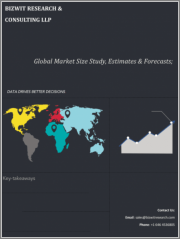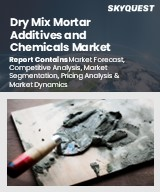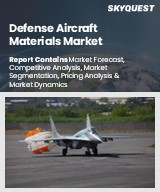
|
시장보고서
상품코드
1381831
세계의 모노머 시장 규모 조사 및 예측 : 유형별, 카테고리별, 최종 용도별, 지역별 분석(2023-2030년)Global Monomers Market Size study & Forecast, by Type, by Category, by End-Use, and Regional Analysis, 2023-2030 |
||||||
모노머 세계 시장은 2022년 약 384억 달러로 평가되며, 2023-2030년 예측 기간 동안 4.8% 이상의 성장률로 성장할 것으로 예상됩니다.
모노머는 긴 사슬을 가지고 다른 분자와 화학적으로 결합할 수 있는 능력을 가진 분자로, 전자제품, 가전제품, 섬유, 포장재, 생활용품 등 다양한 소비재 생산에 활용되고 있습니다. 플라스틱 산업과 자동차 산업의 수요 증가는 2023-2030년 예측 기간 동안 모노머 시장 성장의 주요 요인입니다.
국제에너지기구의 보고서에 따르면 2023년 1분기 전 세계 전기차 판매량은 약 230만대로 전년 동기 대비 약 25% 성장했습니다. 국제자동차건설기구에 따르면 2021년 자동차 생산량은 7,771만대, 2022년에는 8,014만대로 늘어날 전망입니다. 자동차 분야의 수요 증가와 다양한 종류의 플라스틱 생산 증가가 시장 성장의 주요 요인입니다. 또한, 첨단 모노머의 강도와 내구성을 향상시키기 위한 최종 이용 산업의 기술 발전도 시장 성장을 가속화하고 있습니다. 또한 주요 기업의 투자 증가와 급속한 도시화는 시장에 밝은 전망을 가져다 줄 것으로 예상됩니다. 그러나 모노머 사용에 대한 엄격한 정책은 2023년부터 2030년까지 예측 기간 동안 시장 성장을 저해할 것입니다.
세계 모노머 시장의 주요 지역은 아시아태평양, 북미, 유럽, 라틴아메리카, 중동 및 아프리카입니다. 아시아태평양은 플라스틱, 자동차, 포장 등 최종사용자 산업의 사용량 증가, 다양한 산업의 기술 발전, 이 지역의 가처분 소득 증가 등의 요인으로 인해 수익 측면에서 시장을 주도하고 있습니다. 유럽은 폴리머 수요 증가와 제품 효율과 성능 향상을 위한 신소재 개발을 위한 R&D 투자로 인해 가장 빠르게 성장하고 있는 지역입니다.
이 조사의 목적은 최근 몇 년간 다양한 부문과 국가의 시장 규모를 파악하고 향후 몇 년간 시장 규모를 예측하는 것입니다. 이 보고서는 조사 대상 국가의 산업의 질적, 양적 측면을 모두 포함하도록 설계되었습니다.
또한 시장의 미래 성장을 규정하는 촉진요인과 과제와 같은 중요한 측면에 대한 자세한 정보도 제공합니다. 또한, 주요 기업의 경쟁 상황과 제품 제공에 대한 상세한 분석과 함께 이해관계자들이 투자할 수 있는 미시적 시장에서의 잠재적 기회도 포함합니다.
목차
제1장 주요 요약
제2장 모노머 세계 시장 정의와 범위
- 조사 목적
- 시장 정의와 범위
- 산업의 진화
- 조사 범위
- 조사 대상 연도
- 통화 환산율
제3장 모노머 세계 시장 역학
- 모노머 시장의 영향 분석(2020-2030년)
- 시장 성장 촉진요인
- 플라스틱 및 자동차 산업의 수요 증가
- 최종 이용 산업의 기술 진보
- 시장 과제
- 모노머 사용에 관한 엄격한 정책
- 모노머 독성에 관한 우려
- 시장 기회
- 주요 기업에 의한 투자 증가
- 급속한 도시화
- 시장 성장 촉진요인
제4장 세계의 모노머 시장 산업 분석
- Porter's 5 Force 모델
- 공급 기업의 교섭력
- 구매자의 교섭력
- 신규 참여업체의 위협
- 대체품의 위협
- 경쟁 기업 간의 경쟁 관계
- Porter's 5 Force 영향 분석
- PEST 분석
- 정치적
- 경제
- 사회
- 기술
- 환경
- 법률
- 주요 투자 기회
- 주요 성공 전략
- COVID-19 영향 분석
- 파괴적 동향
- 업계 전문가의 관점
- 애널리스트의 결론과 제안
제5장 모노머 세계 시장 : 유형별
- 시장 현황
- 모노머 세계 시장 : 유형별, 실적 - 잠재성 분석
- 모노머 세계 시장 : 유형별, 추정·예측, 2020-2030년
- 모노머 세계 시장, 하위 부문별 분석
- 합성
- 천연
제6장 모노머 세계 시장 : 카테고리별
- 시장 현황
- 모노머 세계 시장 : 카테고리별, 실적 - 잠재성 분석
- 모노머 세계 시장 : 카테고리별, 추정·예측, 2020-2030년
- 모노머 세계 시장, 하위 부문별 분석
- 극성 모노머
- 비극성 모노머
제7장 모노머 세계 시장 : 용도별
- 시장 현황
- 모노머 세계 시장 : 최종 용도별, 실적 - 잠재성 분석
- 모노머 세계 시장 : 최종 용도별, 추정·예측, 2020-2030년
- 모노머 세계 시장, 하위 부문 분석
- 플라스틱
- 의약품
- 섬유
- 농업
- 자동차
- 페인트·코팅
- 방위
- 포장
- 일렉트로닉스 및 통신
- 항공우주
- 건축·건설
- 산업
- 에너지
- 기타
제8장 모노머 세계 시장, 지역 분석
- 주요 국가
- 주요 신흥 국가
- 모노머 세계 시장 : 지역별 현황
- 북미
- 미국
- 유형별, 추정·예측, 2020-2030년
- 카테고리별, 추정·예측, 2020-2030년
- 최종 용도별, 추정·예측, 2020-2030년
- 캐나다
- 미국
- 유럽의 모노머 시장 현황
- 영국
- 독일
- 프랑스
- 스페인
- 이탈리아
- 기타 유럽
- 아시아태평양의 모노머 시장 현황
- 중국
- 인도
- 일본
- 호주
- 한국
- 기타 아시아태평양
- 라틴아메리카의 모노머 시장 현황
- 브라질
- 멕시코
- 중동 및 아프리카
- 사우디아라비아
- 남아프리카공화국
- 기타 중동 및 아프리카
제9장 경쟁 정보
- 주요 기업 SWOT 분석
- 주요 시장 전략
- 기업 개요
- 3M Company
- 주요 정보
- 개요
- 재무(데이터가 입수 가능한 경우에 한함)
- 카테고리 개요
- Asahi Kasei Jyuko Co., Ltd.
- BASF SE
- Wacker Chemie AG
- LG Chem LTD.
- Lubrizol Corporation
- Apcotex Industries Limited
- Arkema SA
- Evonik Industries AG
- Eastman Chemical Company
- 3M Company
제10장 조사 과정
- 조사 과정
- 데이터 광업
- 분석
- 시장 추정
- 검증
- 출판
- 조사 속성
- 조사 가정
Global Monomers Market is valued at approximately USD 38.4 billion in 2022 and is anticipated to grow with a growth rate of more than 4.8% over the forecast period 2023-2030. molecule that has the ability to chemically bond with other molecules in a long chain Monomers help in the production of various consumer goods such as electronics, appliances, textiles, packaging materials, and household products. The increasing demand in the Plastic and automotive industries are the key factors responsible for the monomers market growth of the Monomers over the forecast period 2023-2030.
According to the International Energy Agency's report, in the first quarter of 2023, approximately 2.3 million electric cars were sold worldwide, representing a growth of about 25% compared to the same period last year.. According to the Organisation Internationale des Constructeurs d'Automobiles, in 2021, motor vehicle production is USD 77.71 million units and increased to USD 80.14 million units in 2022. The increasing demand in the automotive sector and growth in the production of various types of plastics are the primary factors of growth in the market. Also, technological advancement in end-use industries to improve the strength and durability of advanced monomers accelerate market growth. Moreover, increased investment by key players and rapid urbanization are anticipated to create a positive outlook for the market. However, stringent policies regarding the usage of monomers stifle market growth throughout the forecast period of 2023-2030.
The key regions considered for the Global Monomers Market study includes Asia Pacific, North America, Europe, Latin America, and Middle East & Africa. Asia Pacific dominated the market in terms of revenue owing to factors such as increased usage in end-user industries such as plastic, automotive, and packaging sectors, technological advancement in various industries, and a rise in disposable income in the region. Europe is the fastest-growing region due to increased demand for polymers and investing in research and development activities to develop new materials to improve the efficiency and performance of products in the region.
Major market player included in this report are:
- 3M Company
- Asahi Kasei Jyuko Co., Ltd.
- BASF SE
- Wacker Chemie AG
- LG Chem LTD.
- Lubrizol Corporation
- Apcotex Industries Limited
- Arkema SA
- Evonik Industries AG
- Eastman Chemical Company
Recent Developments in the Market:
- In Jan 2023, BASF's Monomers announced a sustainability roadmap and expanded its portfolio of climate-friendly products. They expand their portfolio of products with a lower CO2 footprint and Monomers division supplies basic chemicals to key industries such as food packaging, textiles, automotive or construction to wood binders and many others with base chemicals. They have potential to significantly drive the sustainable transformation of both BASF and the various customer industries.
Global Monomers Market Report Scope:
- Historical Data - 2020 - 2021
- Base Year for Estimation - 2022
- Forecast period - 2023-2030
- Report Coverage - Revenue forecast, Company Ranking, Competitive Landscape, Growth factors, and Trends
- Segments Covered - Type, Category, End-Use, Region
- Regional Scope - North America; Europe; Asia Pacific; Latin America; Middle East & Africa
- Customization Scope - Free report customization (equivalent up to 8 analyst's working hours) with purchase. Addition or alteration to country, regional & segment scope*
The objective of the study is to define market sizes of different segments & countries in recent years and to forecast the values to the coming years. The report is designed to incorporate both qualitative and quantitative aspects of the industry within countries involved in the study.
The report also caters detailed information about the crucial aspects such as driving factors & challenges which will define the future growth of the market. Additionally, it also incorporates potential opportunities in micro markets for stakeholders to invest along with the detailed analysis of competitive landscape and product offerings of key players. The detailed segments and sub-segment of the market are explained below:
By Type:
- Synthetic
- Natural
By Category:
- Polar Monomer
- Non polar Monomer
By End-use:
- Plastics
- Pharmaceutical
- Textile
- Agriculture
- Automotive
- Paints & Coatings
- Defens
- Packaging
- Electronics & Telecommunication
- Aerospace
- Building & Construction
- Industrial
- Energy
- Others
By Region:
- North America
- U.S.
- Canada
- Europe
- UK
- Germany
- France
- Spain
- Italy
- ROE
- Asia Pacific
- China
- India
- Japan
- Australia
- South Korea
- RoAPAC
- Latin America
- Brazil
- Mexico
- Middle East & Africa
- Saudi Arabia
- South Africa
- Rest of Middle East & Africa
Table of Contents
Chapter 1. Executive Summary
- 1.1. Market Snapshot
- 1.2. Global & Segmental Market Estimates & Forecasts, 2020-2030 (USD Billion)
- 1.2.1. Monomers Market, by region, 2020-2030 (USD Billion)
- 1.2.2. Monomers Market, by Type, 2020-2030 (USD Billion)
- 1.2.3. Monomers Market, by Category, 2020-2030 (USD Billion)
- 1.2.4. Monomers Market, by End-Use, 2020-2030 (USD Billion)
- 1.3. Key Trends
- 1.4. Estimation Methodology
- 1.5. Research Assumption
Chapter 2. Global Monomers Market Definition and Scope
- 2.1. Objective of the Study
- 2.2. Market Definition & Scope
- 2.2.1. Industry Evolution
- 2.2.2. Scope of the Study
- 2.3. Years Considered for the Study
- 2.4. Currency Conversion Rates
Chapter 3. Global Monomers Market Dynamics
- 3.1. Monomers Market Impact Analysis (2020-2030)
- 3.1.1. Market Drivers
- 3.1.1.1. Increasing demand in Plastic and automotive industry
- 3.1.1.2. Technological advancement in end-use industries
- 3.1.2. Market Challenges
- 3.1.2.1. Stringent policies regarding to usage of monomers
- 3.1.2.2. Concerns Regarding the Toxic Effects of monomers
- 3.1.3. Market Opportunities
- 3.1.3.1. increased investment by key players
- 3.1.3.2. Rapid urbanization
- 3.1.1. Market Drivers
Chapter 4. Global Monomers Market Industry Analysis
- 4.1. Porter's 5 Force Model
- 4.1.1. Bargaining Power of Suppliers
- 4.1.2. Bargaining Power of Buyers
- 4.1.3. Threat of New Entrants
- 4.1.4. Threat of Substitutes
- 4.1.5. Competitive Rivalry
- 4.2. Porter's 5 Force Impact Analysis
- 4.3. PEST Analysis
- 4.3.1. Political
- 4.3.2. Economic
- 4.3.3. Social
- 4.3.4. Technological
- 4.3.5. Environmental
- 4.3.6. Legal
- 4.4. Top investment opportunity
- 4.5. Top winning strategies
- 4.6. COVID-19 Impact Analysis
- 4.7. Disruptive Trends
- 4.8. Industry Expert Perspective
- 4.9. Analyst Recommendation & Conclusion
Chapter 5. Global Monomers Market, by Type
- 5.1. Market Snapshot
- 5.2. Global Monomers Market by Type, Performance - Potential Analysis
- 5.3. Global Monomers Market Estimates & Forecasts by Type 2020-2030 (USD Billion)
- 5.4. Monomers Market, Sub Segment Analysis
- 5.4.1. Synthetic
- 5.4.2. Natural
Chapter 6. Global Monomers Market, by Category
- 6.1. Market Snapshot
- 6.2. Global Monomers Market by Category, Performance - Potential Analysis
- 6.3. Global Monomers Market Estimates & Forecasts by Category 2020-2030 (USD Billion)
- 6.4. Monomers Market, Sub Segment Analysis
- 6.4.1. Polar Monomer
- 6.4.2. Non polar Monomer
Chapter 7. Global Monomers Market, by End-Use
- 7.1. Market Snapshot
- 7.2. Global Monomers Market by End-Use, Performance - Potential Analysis
- 7.3. Global Monomers Market Estimates & Forecasts by End-Use 2020-2030 (USD Billion)
- 7.4. Monomers Market, Sub Segment Analysis
- 7.4.1. Plastics
- 7.4.2. Pharmaceutical
- 7.4.3. Textile
- 7.4.4. Agriculture
- 7.4.5. Automotive
- 7.4.6. Paints & Coatings
- 7.4.7. Defense
- 7.4.8. Packaging
- 7.4.9. Electronics & Telecommunication
- 7.4.10. Aerospace
- 7.4.11. Building & Construction
- 7.4.12. Industrial
- 7.4.13. Energy
- 7.4.14. Others
Chapter 8. Global Monomers Market, Regional Analysis
- 8.1. Top Leading Countries
- 8.2. Top Emerging Countries
- 8.3. Monomers Market, Regional Market Snapshot
- 8.4. North America Monomers Market
- 8.4.1. U.S. Monomers Market
- 8.4.1.1. Type breakdown estimates & forecasts, 2020-2030
- 8.4.1.2. Category breakdown estimates & forecasts, 2020-2030
- 8.4.1.3. End-Use breakdown estimates & forecasts, 2020-2030
- 8.4.2. Canada Monomers Market
- 8.4.1. U.S. Monomers Market
- 8.5. Europe Monomers Market Snapshot
- 8.5.1. U.K. Monomers Market
- 8.5.2. Germany Monomers Market
- 8.5.3. France Monomers Market
- 8.5.4. Spain Monomers Market
- 8.5.5. Italy Monomers Market
- 8.5.6. Rest of Europe Monomers Market
- 8.6. Asia-Pacific Monomers Market Snapshot
- 8.6.1. China Monomers Market
- 8.6.2. India Monomers Market
- 8.6.3. Japan Monomers Market
- 8.6.4. Australia Monomers Market
- 8.6.5. South Korea Monomers Market
- 8.6.6. Rest of Asia Pacific Monomers Market
- 8.7. Latin America Monomers Market Snapshot
- 8.7.1. Brazil Monomers Market
- 8.7.2. Mexico Monomers Market
- 8.8. Middle East & Africa Monomers Market
- 8.8.1. Saudi Arabia Monomers Market
- 8.8.2. South Africa Monomers Market
- 8.8.3. Rest of Middle East & Africa Monomers Market
Chapter 9. Competitive Intelligence
- 9.1. Key Company SWOT Analysis
- 9.1.1. Company 1
- 9.1.2. Company 2
- 9.1.3. Company 3
- 9.2. Top Market Strategies
- 9.3. Company Profiles
- 9.3.1. 3M Company
- 9.3.1.1. Key Information
- 9.3.1.2. Overview
- 9.3.1.3. Financial (Subject to Data Availability)
- 9.3.1.4. Category Summary
- 9.3.1.5. Recent Developments
- 9.3.2. Asahi Kasei Jyuko Co., Ltd.
- 9.3.3. BASF SE
- 9.3.4. Wacker Chemie AG
- 9.3.5. LG Chem LTD.
- 9.3.6. Lubrizol Corporation
- 9.3.7. Apcotex Industries Limited
- 9.3.8. Arkema SA
- 9.3.9. Evonik Industries AG
- 9.3.10. Eastman Chemical Company
- 9.3.1. 3M Company
Chapter 10. Research Process
- 10.1. Research Process
- 10.1.1. Data Mining
- 10.1.2. Analysis
- 10.1.3. Market Estimation
- 10.1.4. Validation
- 10.1.5. Publishing
- 10.2. Research Attributes
- 10.3. Research Assumption



















